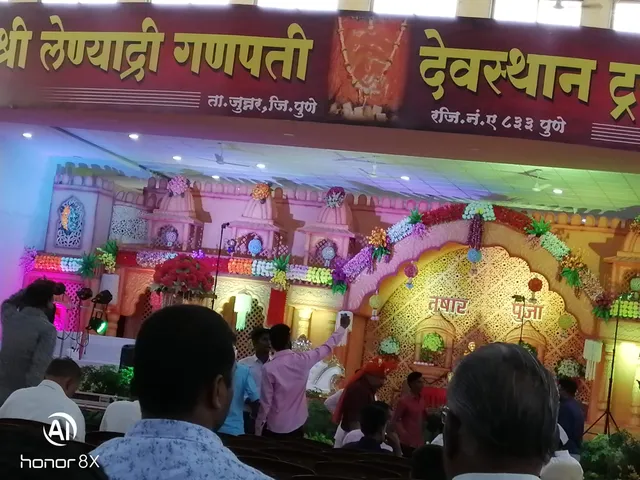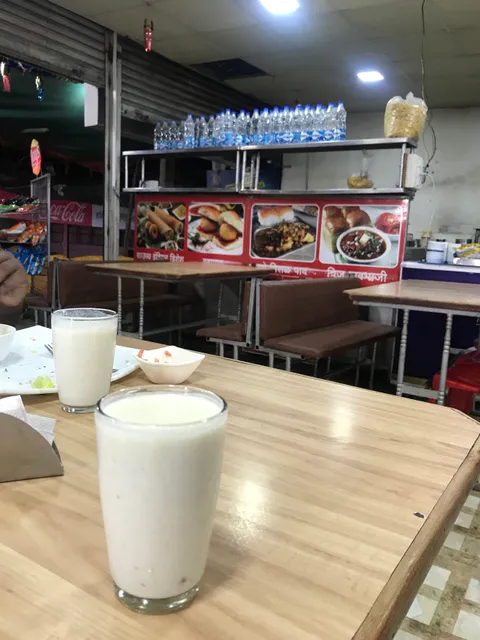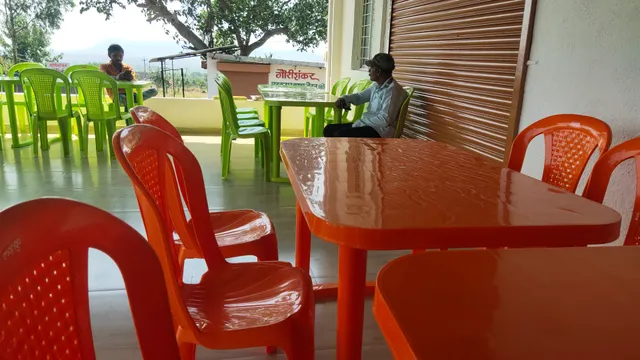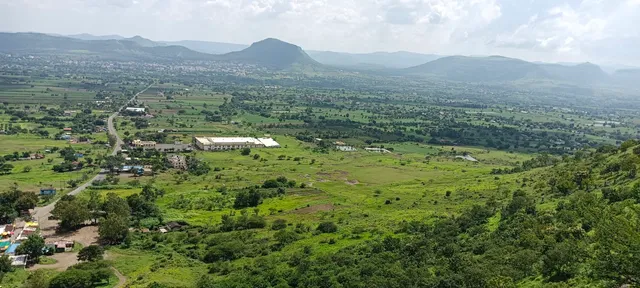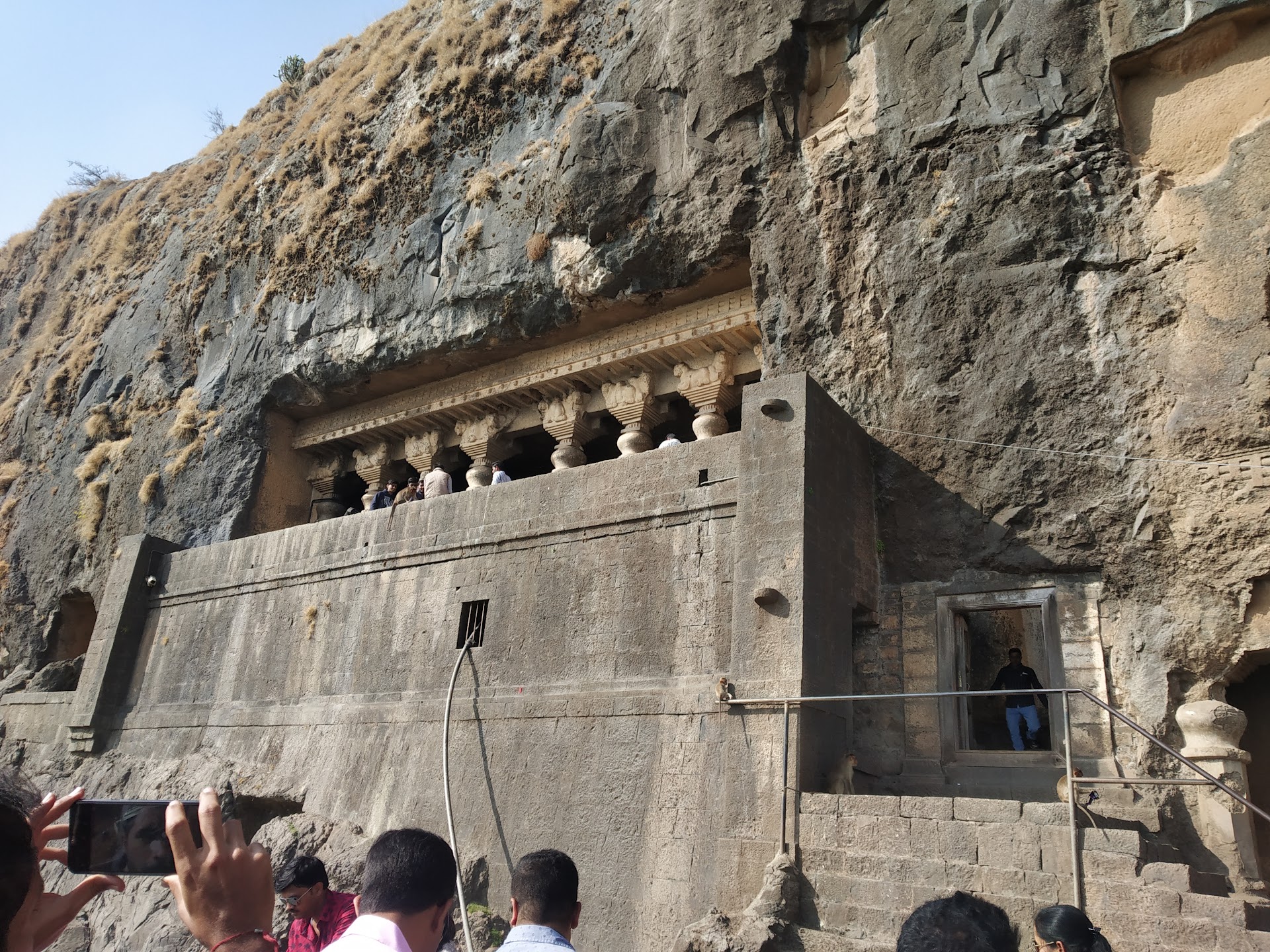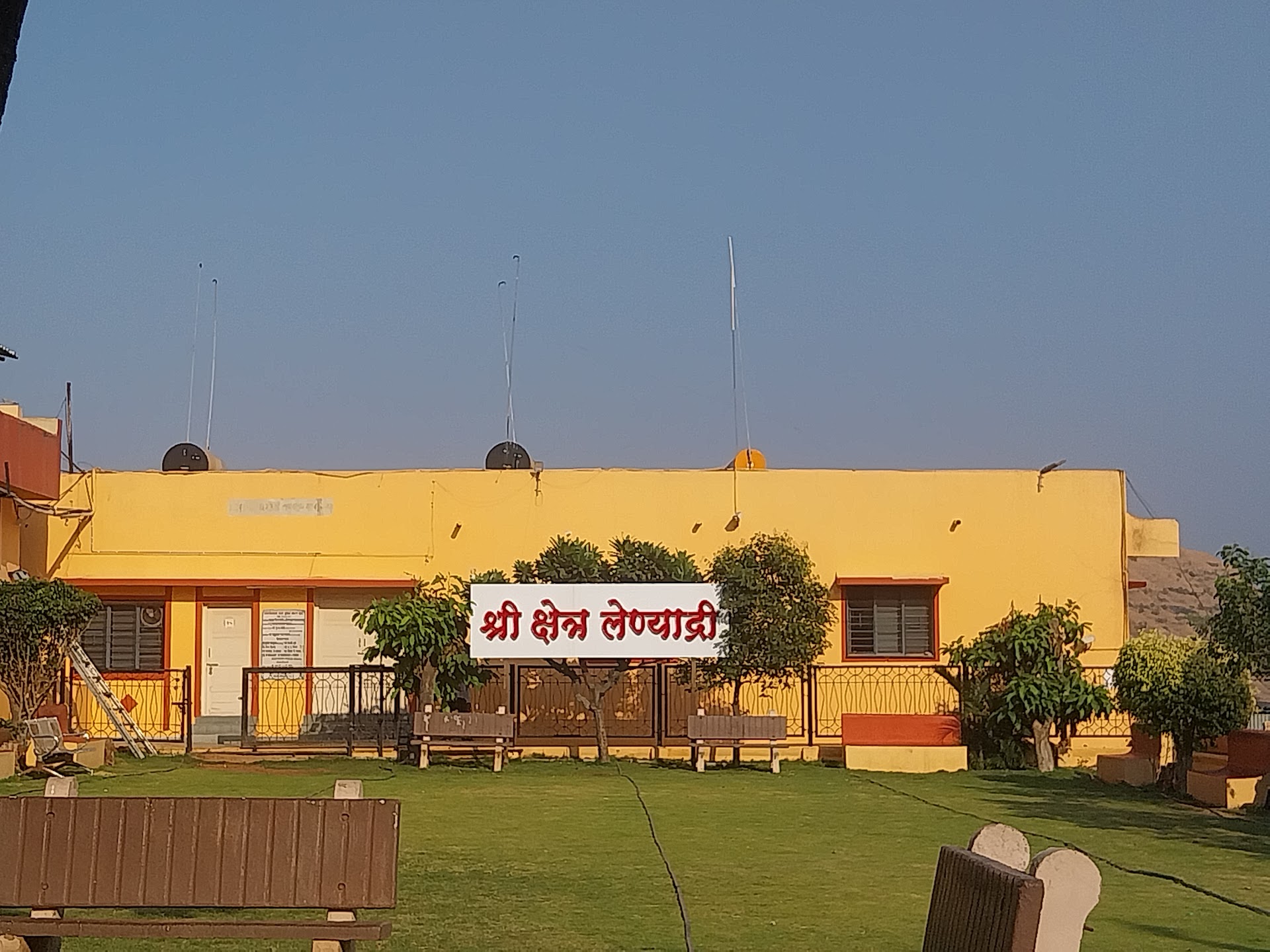Ashta Vinayak Mandir - 6
Shri Girijatmaja Temple or
Lenyadri Ganesha,
Junnar, Pune District.
Maharashtra.
Lenyadri (Marathi: लेण्याद्री, Leṇyādri), sometimes called Ganesa Lena, Ganesh Pahar Caves, or Suleman Caves, represents a series of about 30 rock-cut Buddhist caves, located about 4.8 kilometres (3.0 mi) north of Junnar in Pune district in the Indian state of Maharashtra. Other caves surrounding the city of Junnar are: Manmodi Caves, Shivneri Caves and Tulja Caves.
Cave 7, originally a Buddhist vihara, has been adapted as a Hindu temple dedicated to the god Ganesha. It is one of the Ashtavinayak shrines, a set of the eight prominent Ganesha shrines in Western Maharashtra. Twenty-six of the caves are individually numbered. The caves face to the south and are numbered serially from east to Caves 6 and 14 are chaitya-grihas (chapels), while the rest are viharas (dwellings for monks). The latter are in the form of dwellings and cells. There are also several rock-cut water cisterns; two of them have inscriptions. The layout of the caves, in general, are similar in pattern and shape. They generally have one or two sides with two long benches for occupants' use.
The caves date from between the 1st and 3rd century AD; the Ganesha shrine situated in Cave 7 is dated to the 1st century AD, though the date of conversion to a Hindu shrine is unknown. All of the caves arise from Hinayana Buddhism.
Names
The current name "Lenyadri" literally means "mountain cave". It is derived from 'Lena' in Marathi meaning "cave" and 'adri' in Sanskrit meaning "mountain" or "stone". The name "Lenyadri" appears in the Hindu scripture Ganesha Purana as well as in a Sthala Purana, in association to the Ganesha legend. It is also called Jeernapur and Lekhan parvat ("Lekhan mountain").
The hill was once known as Ganesh Pahar ("Ganesha hill"). An ancient inscription calls the place Kapichita (Kapichitta). The caves are also known as Ganesh Lena or Ganesh Caves.
Geography
Lenyadri is located at 19°14′34″N 73°53′8″E, in the Indian state of Maharashtra in Pune district. Lenyadri is a deserted location, with no human settlement nearby. It is located at about 4.8 kilometres (3.0 mi) from Junnar, the headquarters of Junnar taluka. It is situated on the north-west banks of river Kukadi, which flows between Golegaon and Junnar.
It is also approached through Nanaghat, which was originally on the trade route between Aparantaka or the northern Konkan and the Deccan and descending to the plains of the Junnar town. The circular hill, where Lenyadri caves have been emboweled, raises about 30 metres (98 ft) above the plains in the Hatkeshwar and Suleiman ranges.
Lenyadri is the only Ashtavinayaka temple on a mountain and within the precincts of Buddhist caves.
Architecture
The Ganesha temple is located in Cave 7, the largest excavation around Junnar, about 30 metres (98 ft) above the plains. It is essentially a Buddhist Vihara (a dwelling for monks, mostly with meditation cells) in design, an unpillared hall with 20 cells with varying dimensions; 7 on either side and 6 on the rear wall. The hall is large, can be entered by a central door, under a pillared veranda. The hall is 17.37 metres (57.0 ft) long; 15.54 metres (51.0 ft) wide and 3.38 metres (11.1 ft) high. There are 2 windows on either side of the entrance. The hall is treated now as a sabha-mandapa ("assembly hall") of the Ganesha temple. 283 steps built (by devotees) in stone masonry over eight flights lead to the entrance.
The steps are believed to represent sensual pleasures, which Ganesha has overcome. The veranda has six pillars and two pilasters (half-pillars), that support "an architrave from which projects eaves relieved with a railing resting on beams and rafters". The pillars have octagonal shafts and "over benches and back rest and topped by an inverted ghata, compressed amalaka in between two square plates, inverted stepped pyramid and finally crowned by a bracket" with tigers,...
Read more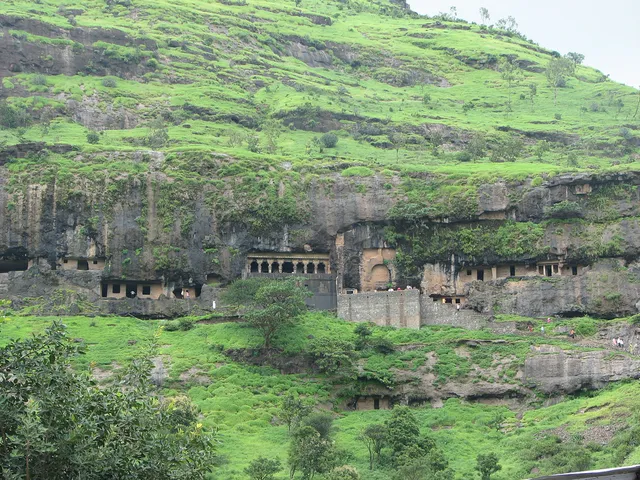
 Learn more insights from Wanderboat AI.
Learn more insights from Wanderboat AI.



